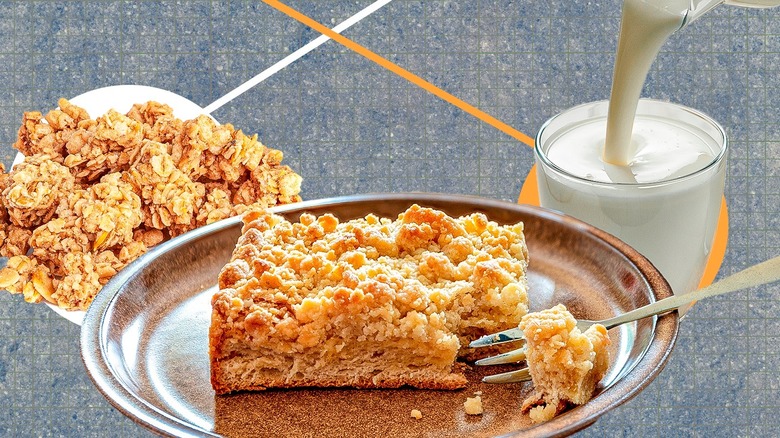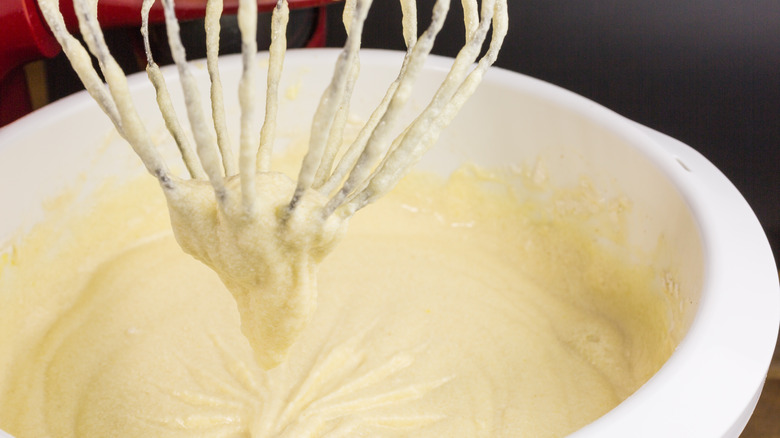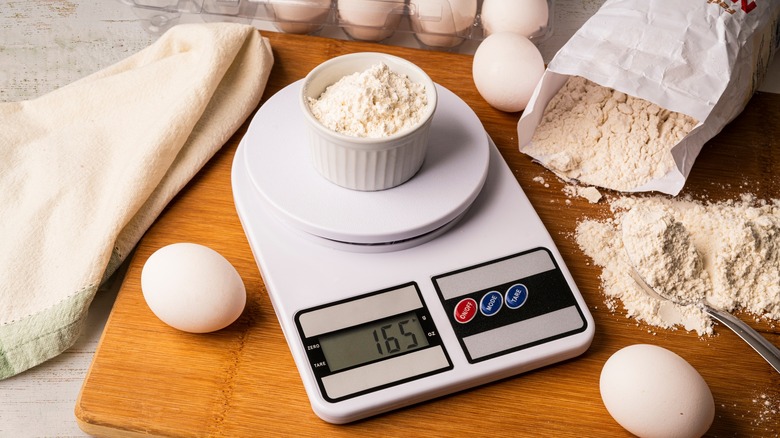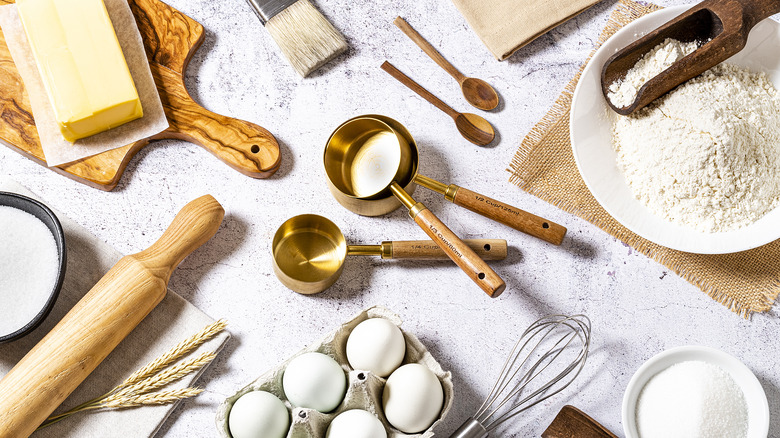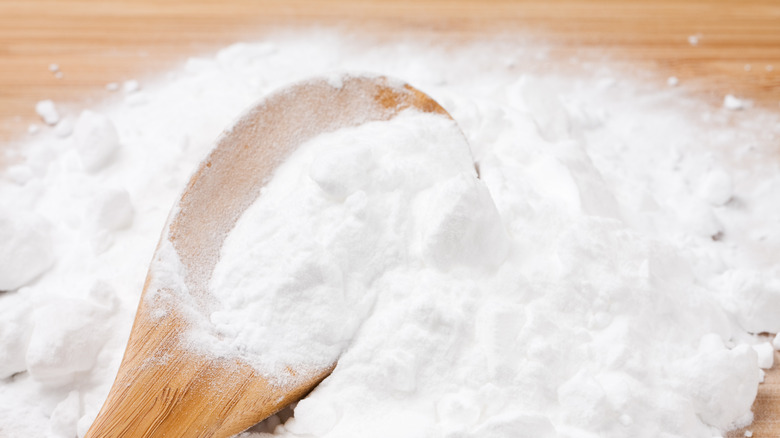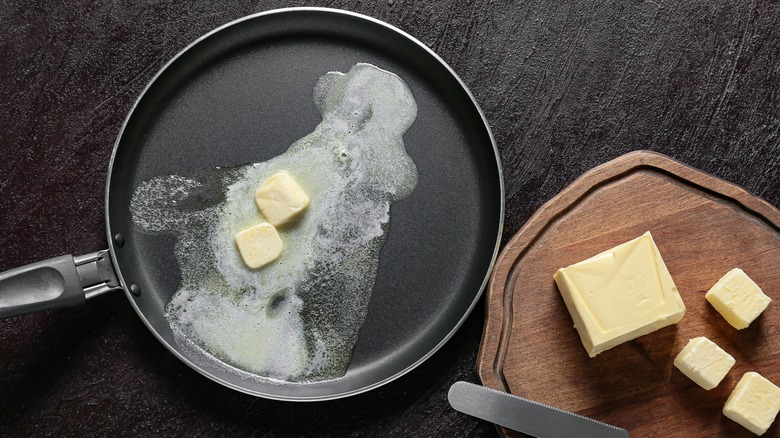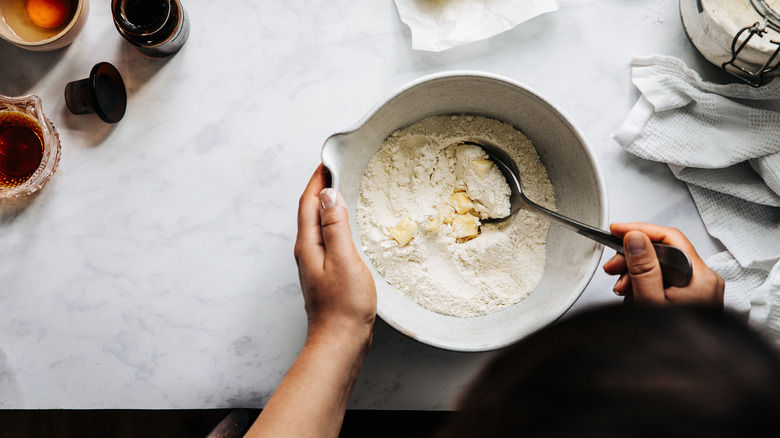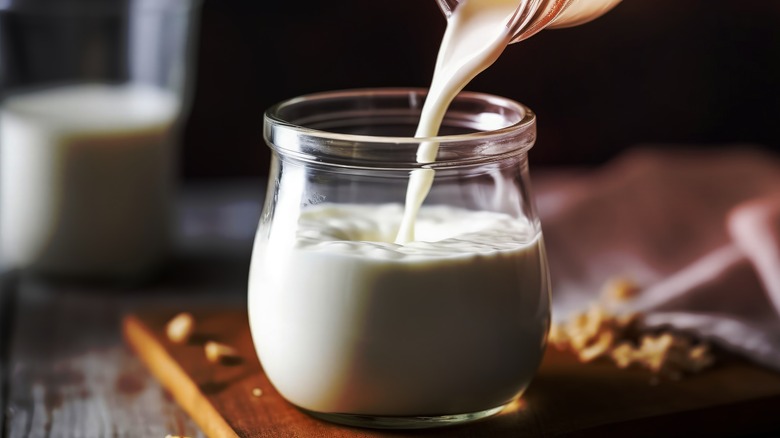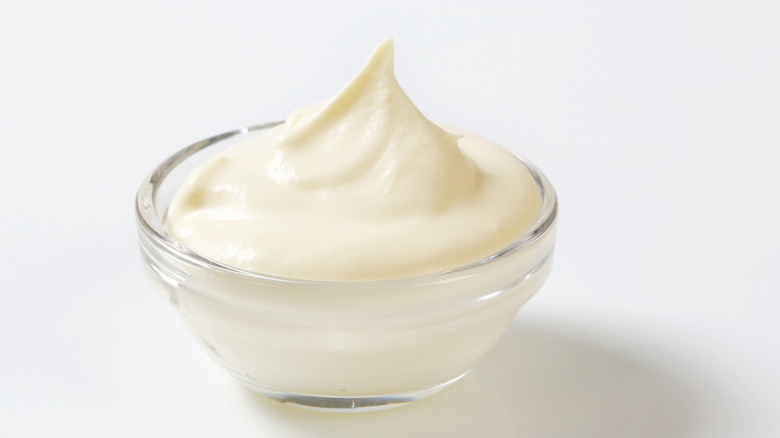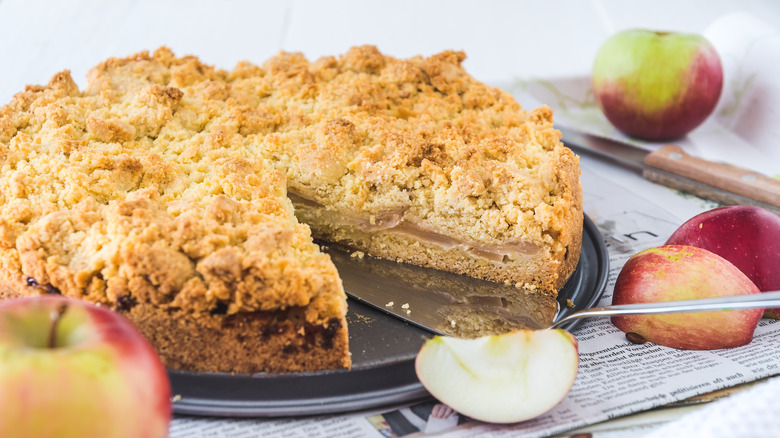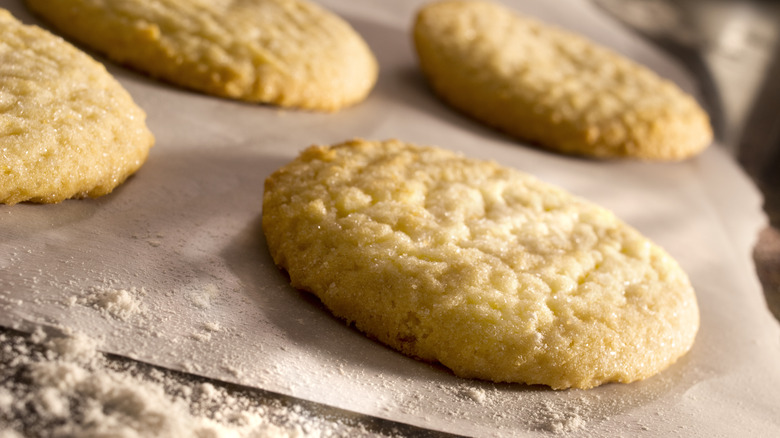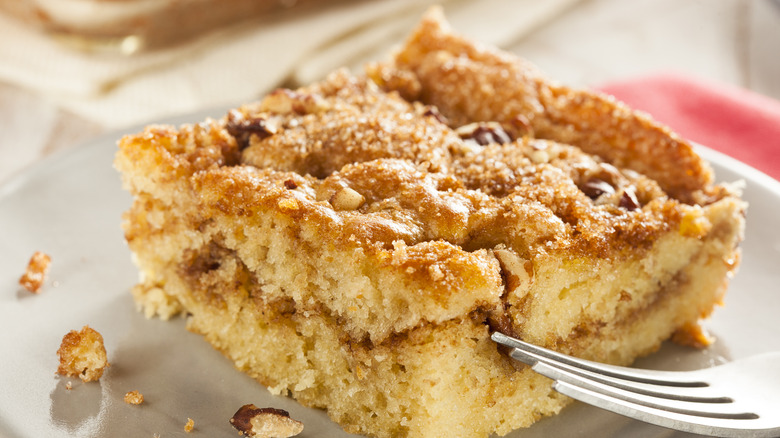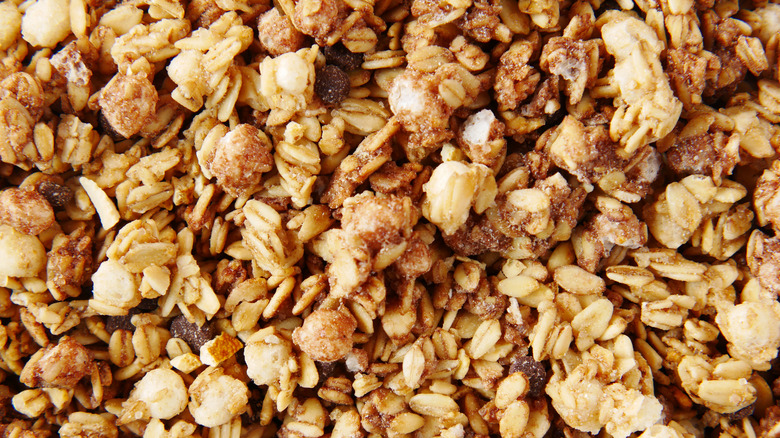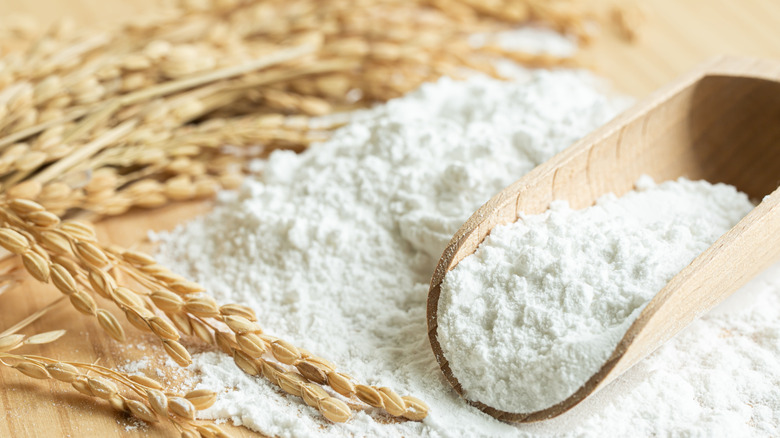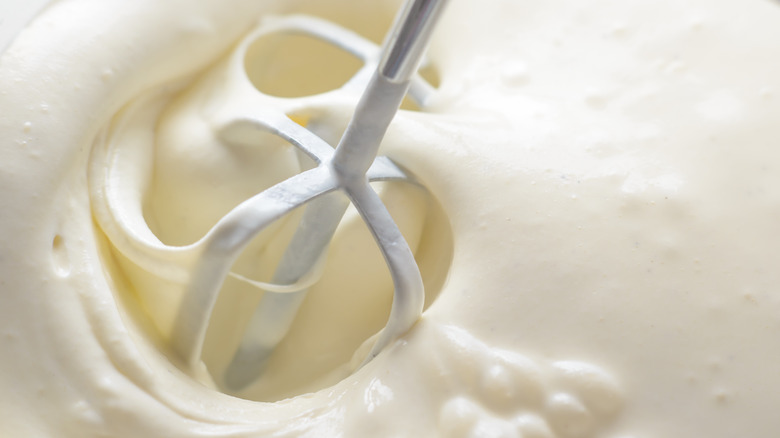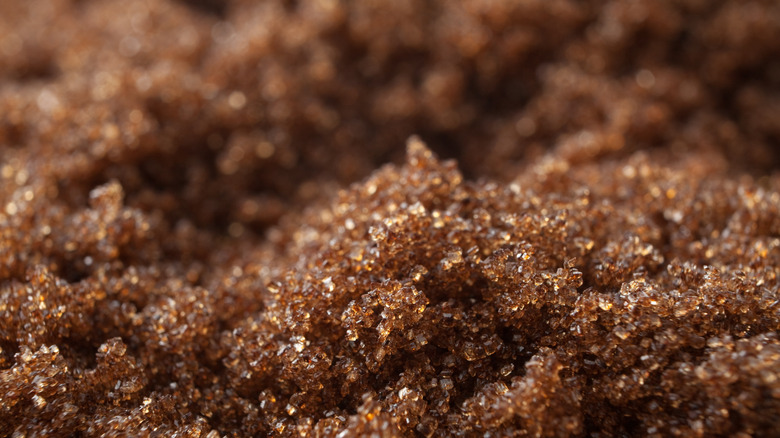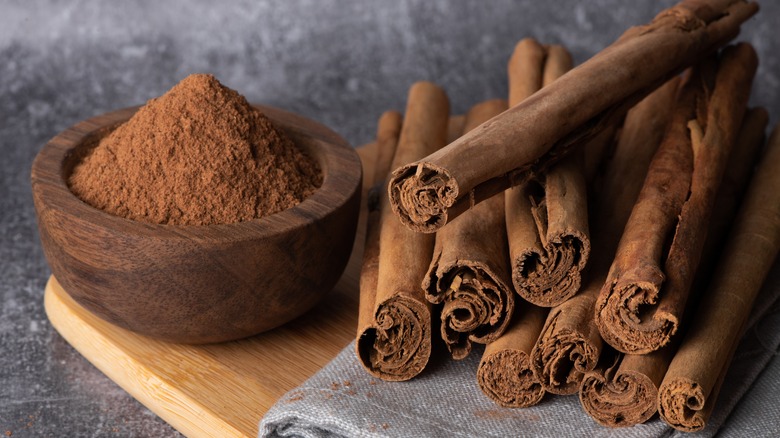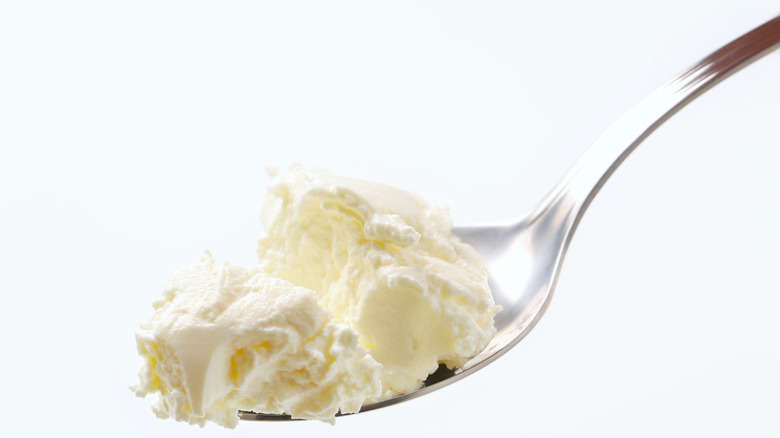17 Tips You Need When Making Crumb Cake
We will never turn down a slice of crumb cake at our local bakery or café. In fact, our eyes always light up at the hunks of brown sugar streusel on top of a decadently soft sponge and always prompt us to awkwardly ask the counterperson for the slice with the greatest proportion of topping on it.
While crumb cake may often be confused with coffee cake, noticeable differences set the two apart. The biggest one is the difference in streusel. While coffee cake may include a few sparse crumbs, the crumb portion of the aptly named "crumb cake" is almost the same height as the cake. The streusel is also purposefully dense and clumpy, providing a compelling, diverse texture in every bite. Is your mouth watering yet?
Crumb cakes are relatively easy to replicate at home but require attention to detail and basic baking skills. As connoisseurs of these bakery staples, we've made a crumb cake (or two ... or 20) in our short lifetime. Here are some of our best tips for creating your own crumb cake.
17. Avoid overmixing your cake batter or topping
The overmixing rule is critical to mastering any sort of cake — whether it be a decadent red velvet layer cake or a humble crumb cake. When you overmix the batter, the gluten in the flour will bind to any of the water molecules and create an elastic texture. While some gluten development is good for a cake, especially one that has to support a heavy crumb streusel, too much gluten development will cause your crumb cake to taste more like a dinner roll.
The key to overcoming overmixing? Stop it from happening in the first place. When you mix your dry and wet ingredients, only stir it enough so that all the flour disappears. You should also mix immediately after combining your dry ingredients (including leavening and flour) with the wet to maximize the air bubbles going into the oven. This will help give your cake a light, airy sponge rather than a dense one.
16. Use a scale to measure your ingredients
Every novice baker makes the big mistake of measuring ingredients by cups rather than weight. Although you might wonder how different one cup of flour can be to the next, rest assured that the difference can alter the texture of your entire recipe. For example, shoving that cup into your flour bag can compact the ingredients, compared to the fluffy, light flour that the recipe intended. It's also helpful for common crumb cake ingredients like brown sugar, which some people pack into the measuring cup while others measure it unpacked.
You should bake with a scale because you can't argue with those numbers. If the recipe calls for 128 grams of flour, you can easily measure out to the gram. This will ensure that your recipe stays as accurate as possible, and you can replicate it to a T the next time you bake it.
15. Bring all of your ingredients to room temperature before starting
Don't slack on recipe preparation, including the first step of bringing your ingredients to room temperature before you bake. This includes the eggs, which help add airiness and structure to your batter. You shouldn't use cold eggs when baking a cake because the eggs won't emulsify as easily with the rest of the batter and can potentially alter the temperature of your other ingredients. This may lead to lumpy batter or a potentially stodgy cake. To easily bring your eggs up to room temperature, plop them carefully into a bowl with warm water — or plan ahead of time and leave them on the counter before you start cracking.
Most crumb cake recipes will call for melted butter on the top of the cake — so you won't have to worry about softening it ahead of time. If you're a fan of discernable chunks on top of each slice, though, swap it out with equal parts softened butter pieces and vegetable shortening.
14. Check your leavening agents for freshness before mixing them in
Like other types of cake, crumb cake is leavened with chemical leavening agents like baking soda and baking powder. These ingredients release carbon dioxide, which, when exposed to acids and water, respectively, gives the cake a bit of a poofy rise. Failing to adequately test your baking soda or baking powder before adding it to your dry ingredients can result in disaster — and hard, stodgy cake.
The test the two leavening agents, mix them with an acid like lemon juice or vinegar for baking soda and water for baking powder. If the mixture starts to foam within a few seconds, then you are good to add a fresh spoonful into your batter. But if you notice little activity, it's time to switch the containers out for new ones. Moreover, introducing certain ingredients to your batter, like acidic buttermilk or tangy sour cream, may alter the cake's rise.
13. Swap your butter for brown butter for a better flavor
Adding browned butter to the mix improves almost any baked good. You can make brown butter at home by adding a few pats to a skillet and stirring it over medium heat until brown flecks start to appear and your kitchen smells warm and toasty. Then, measure out your butter and add it to the batter — or better yet — the streusel. The flavor of this brown butter crumb cake is much more toffee-like and complex than if you used plain butter alone.
If the base of your cake calls for softened butter, do not pour the melted butter (especially when it's hot) into your batter because it could scramble your eggs and alter its consistency. Instead, pour it into a heat-proof bowl and pop it in the freezer until it hardens slightly before adding it to your batter.
12. Try a reverse creaming method
Most people know the traditional creaming method of baking: Whipping the butter and sugar together in a mixing bowl before adding the other wet ingredients and then the dry. Creaming the butter and the sugar together before the rest of the ingredients whips more air into your butter, which results in a light, airy sponge.
The trick to making a great crumb cake may not be with the traditional creaming method but rather with the reverse creaming method. Start by adding your dry ingredients to the mixer until combined. Then, introduce the flour and just enough liquid to ensure all the flour is coated. Coating the flour in fat will slow dreaded gluten development and prevent the batter from getting overworked, and you won't have to worry about over-whipping the butter and sugar together. Once you've mixed the butter and the dry ingredients, incrementally pour in the rest of your liquid and mix until the batter has just come together.
11. Add buttermilk to the batter to keep it soft
Never underestimate the power of buttermilk when it comes to baking. Adding a splash to your crumb cake is one of the best ways to use leftover buttermilk or add a little bit of a tangy twist to your recipe. It's a crucial ingredient for crumb cake because the acidity and sharpness balance out the sweetness of your batter and streusel topping, and it also acts as a tenderizer for the gluten. This will mean that your cake stays super-fluffy and soft while also even-keeled in the flavor department.
Not many people keep a carton of buttermilk in their fridge, but there is a simple DIY swap. Add an acid, like vinegar or lemon juice, to plain milk or a dairy-free substitute and mix until combined. The acid will help thicken the milk and give it a distinct tang — all without requiring an additional trip to the store.
10. Use sour cream or yogurt to keep your crumb cake base moist
Sour cream is the secret ingredient that will make your coffee cake extra-moist, and the same applies to crumb cake. Because this tangy dairy product is so thick, it doesn't easily evaporate as your cake bakes, which will ensure your moisture stays trapped inside the crumb. Plus, it's comprised of mostly fat, meaning it will produce a bite with a slightly tangy flavor. Like buttermilk, sour cream's acidity will balance out the sweetness of the cake and make it a bit more appropriate to be consumed before 10 am.
If you don't have sour cream in your refrigerator, try Greek yogurt instead. It has a less fatty flavor, so it's a logical way to maintain the moisture of your recipe and cut some of the calories. Whole milk Greek yogurt is ideal for baking because it has less protein, thus lending a more tender texture.
9. Consider adding fruit to your crumb cake for extra moisture and flavor
Although there is nothing wrong with a plain crumb cake, adding your favorite fruit to the mix delivers unique flavors and boosts its moisture content. For example, try making a chunky apple version by adding pieces of your favorite baking apples to the batter. We recommend cutting the apples finely for this recipe, as larger pieces often don't soften at the same rate as the rest of the sponge. Swirl these pieces of fruit directly into the batter, or add alternating layers to your cake before topping with streusel.
Pumpkin also works well in crumb cake and is perfect for a warm fall treat. Add the purée directly to the batter and amp up your spices by including more than just cinnamon. Cloves, nutmeg, and allspice not only improve basic crumb cakes but bring a more autumnal flair to this pumpkin crumb cake.
8. Swap out the traditional crumble with leftover cookies
Making a streusel for your cake may seem like an extra cooking step. If you want to maximize your recipe's crunchiness but take the easy way out (we don't blame you), use stale cookies for your crumb cake instead. While these cookies may be a bit too soft to eat, they make an excellent topping for your cake. Pop the cookies into a bag and crush them with a rolling pin until coarse. Then, add them to the top of your batter before sliding the pan into the oven. You can also position the cookies in the batter to create a layered effect.
There aren't many rules as to what kinds of cookies you can or can't use in your recipe. A chocolate cake base is just dying for crushed OREO cookies, while a spice cake can be amped up with crushed molasses, gingersnap, or Biscoff cookies.
7. Mix your streusel topping with a fork
When it comes to making your streusel, you may be inclined to drop everything into a food processor and step away. Although we love this appliance as much as anyone, it's not the best tool for preparing streusel. You should always mix your streusel topping with a fork because that will prevent you from overmixing the ingredients and creating a hard topping. The speed and power of a food processor will cause your topping to compact and crisp up in the oven rather than stay light and crumbly.
Instead, place your dry ingredients into a bowl and slowly mix it with the butter and sugar, using a fork, until a crumbly texture forms. Ideally, you'll want to get differing sizes of streusel, ranging from a large walnut to a pea. You'll know that your streusel is ready to go when no dry clumps remain.
6. Use granola in your crumb cake
That bag of granola lurking in the back of your pantry can provide another topping that will improve your homemade streusel's texture. An easy streusel swap for a quicker cake topping without the mess, granola's nuts and crisp oat pieces will add even more crunch. Many granola brands already have a touch of sweetness and spice, which will balance out the flavors in your cake.
Not all granolas are created equal, however, especially for this swap. You'll want to avoid granola with any dried fruit, like pesky raisins or cranberries, since these morsels will just burn in the oven. Instead, go for a clustered granola with oats, nuts, and grains. Add your granola, crumbled more finely as needed, to the cake before you pop it in the oven. You'll be rewarded with a tasty breakfast — and some cleared space in your cabinet.
5. Add the flour to your streusel last
Have you ever experienced pasty streusel topping? This is likely because you didn't add the ingredients correctly — or you overmixed the flour and the butter to the point where gluten developed. The trick is always adding the flour last and only mixing it so that it is well-distributed in the batter. Adding your flour to the streusel last will prevent the water in the butter from hydrating the flour, which would otherwise create the floury paste.
If you make your streusel topping ahead of time, you can always set it aside or put it in the refrigerator to keep it cold. If you like diving into a crumb cake with noticeable crumb topping chunks, this refrigeration time is critical to allow the crumb topping to harden. Then, when your cake is ready to bake, layer a thick coating on it and gently press down to stick it to the cake.
4. Add a glaze on top
Your cake isn't finished until you add a garnish on top — and we're not talking just the streusel. Two popular options for completing your crumb cake include powdered sugar and a quick glaze made with powdered sugar, a splash of milk, and vanilla. The glaze is our go-to for crumb cake because it is always so satisfying to shamelessly lick it off your fingers when you're finished with a slice, and you can infuse it with flavors to match the other ingredients in your cake.
For example, a standard crumb cake can be elevated with a maple glaze. It's made with both maple syrup and maple extract, which helps add a more oaky undertone to your cake. Alternatively, you can also make a lemon-infused glaze for your citrusy pound cake using a splash of lemon juice and enough powdered sugar to balance out the acidity.
3. Always use soft brown sugar
When making a traditional crumb cake, brown sugar is a critical streusel ingredient. And there is perhaps no worse feeling than going into your closet to see that your brown sugar has solidified and hardened into a single, impenetrable block that you can't even break off into small pieces. You can attempt to revive your brown sugar by placing it in a microwave covered with a damp paper towel and microwaving it for 20-second intervals until it's soft. The key is to watch it closely because heating the brown sugar may cause it to burn.
Although hindsight is 20/20, you'll ideally want to properly store your brown sugar to prevent having to bring it back to life. The best ways to keep brown sugar soft include storing it in an airtight container to avoid moisture encroachment or using a slice of bread or apple to help the mixture retain its stickiness.
2. Use different types of cinnamon
Plain crumb cake can be bland if you rely only on cinnamon to flavor it. While you certainly can — and should — explore more warming spices like ginger, cloves, or nutmeg, the most trouble-free way to switch up your recipe's flavor is to add a different type of cinnamon to the mix. Most of the cinnamon found in grocery stores is Cassia, which has a spicy undertone. In contrast, Ceylon cinnamon boasts a sweeter bite with a more floral aroma — which elevates it to being our preferred cinnamon for baking cakes or adding to oatmeal.
Whenever we make crumb cake, our go-to cinnamon blend is Penzys cinnamon — which contains Ceylon, as well as Chinese cinnamon, Vietnamese cinnamon, and Korintje cinnamon. We've found this blend to be more complex in aroma and flavor than the plain cinnamon we buy from the grocery store.
1. Swirl in cream cheese for a decadent bite
A great bake uses contrasting flavors and consistencies to create harmony in every bite. We've found that adding a swipe of cream cheese to our cake before studding it with the streusel topping is one of the best ways to create this textural dichotomy. You'll need to use full-fat cream cheese (none of that reduced-fat, whipped stuff) to maximize the texture of your recipe. You should also bring the cream cheese up to room temperature before whipping it with sugar and eggs so that it's easier to mix together. This will also prevent your cream cheese layer from developing a gritty texture.
When your batter is finished, pour it into the prepared pan before adding your cream cheese and swirling it in with an offset spatula. This recipe adaptation can also be used for flavored crumb cakes, including a zesty lemon or sinful chocolate.
